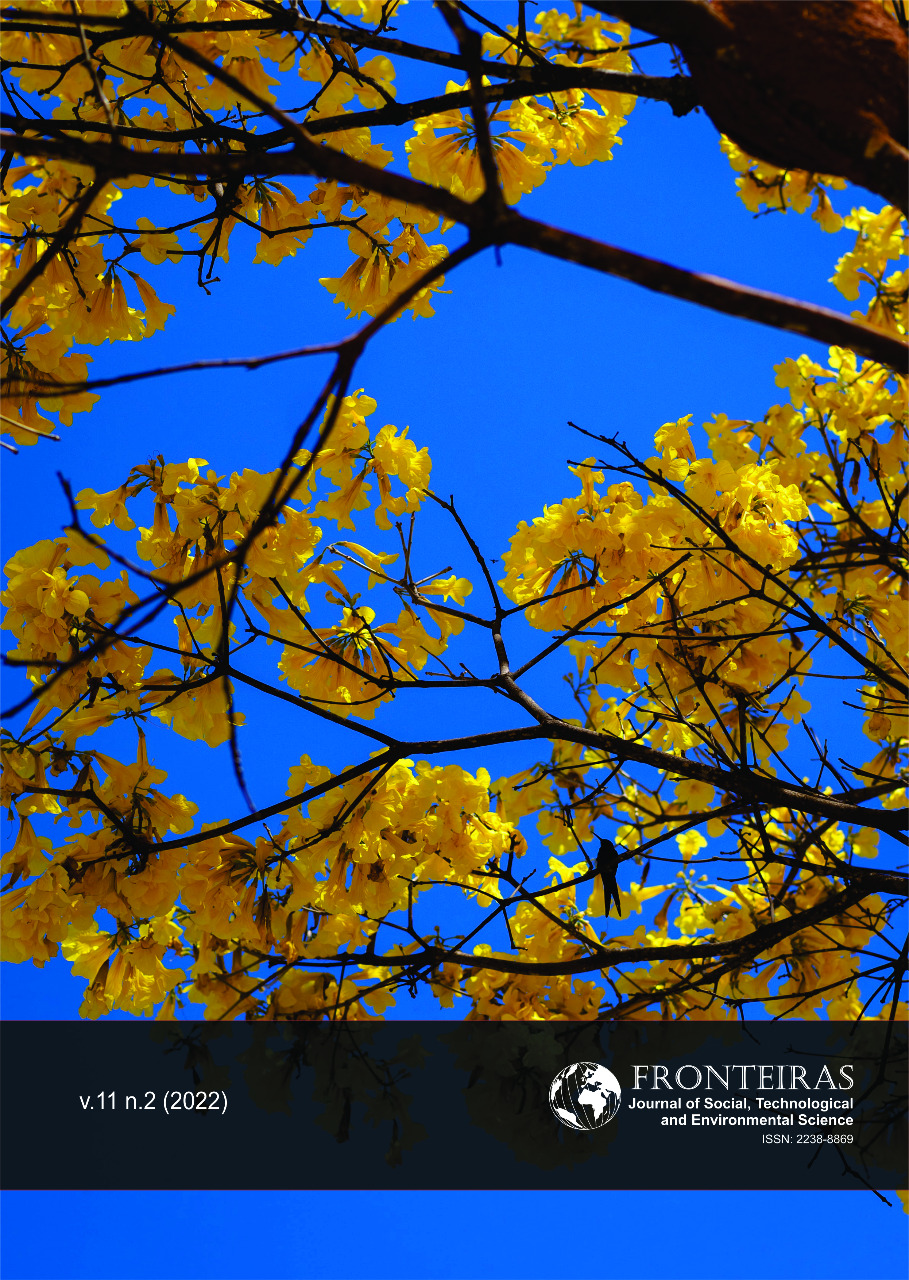Antropoceno e a Consciência Artística Global: Do Paleolítico à Sabedoria Ancestral da Floresta Amazônica
DOI:
https://doi.org/10.21664/2238-8869.2022v11i2.p252-264Palabras clave:
antropoceno, arte, ecologia, multiculturalidade, xamanismoResumen
As artes têm um papel decisivo nos debates sobre o Antropoceno: estas revelam a consciência de mais uma crise causada pelo humano, pondo a nu a decepção com a ordem civilizacional. A arte paleolítica já trazia uma consciência humilde e grata do humano face à grandiosidade dos animais e da natureza. No mundo contemporâneo a arte que recebe uma influência indígena e xamânica, com uma linguagem que mais do que trazer à colação questões como destruição e extinção, oferecem uma dimensão de beleza e harmonia com o cosmos, uma esperança de abertura a uma consciência verdadeiramente humanizada, exerce uma crítica consciente ao Antropoceno. Testemunha deste fenómeno é a popularização global da ayahuasca, que saindo das florestas da América Latina para os grandes centros da Europa e da América do Norte tem inspirado muitos artistas, proporcionando um debate artístico-político que coloca em relação a ecologia, a harmonia cósmica e a pluralidade cultural.
Citas
Bonneuil C & Fressoz JB 2016. The Shock of the Anthropocene: The earth, history and us. Verso: Londres, 320 pp.
Borer A 2022. Joseph Beuys. São Paulo: Cosac & Naify, 240 pp.
Bortulecce V 2013. Arte como Catarse: As Performances de Joseph Beuys e a Ressignificação do Mundo. Ix Eha - Encontro de História da Arte – UNICAMP, pp. 413-416 https://www.ifch.unicamp.br/eha/atas/2013/Vanessa%20Beatriz%20Bortulucce.pdf
Carvalho A 2021. Os caboclos já chegaram: por uma escuta multiespécies das vozes do antropoceno. Pol. Hist. Soc., Vitória da Conquista, v. 20, n. 1, p. 170-191, jan.-jun. 2021. ISSN 2236-8094, pp. 170- 191.
Cayali J 2022. A Tribo Shipibo-Conibo. [cited 2022 Mar 20]. Available from: https://joycayali.blogspot.com/2019/10/a-tribo-shipibo-conibo.html.
Childe, G 1975. A Evolução Cultural do Homem. Zahar Editores: Rio de Janeiro, 229 pp.
Elhacham E & Ben-Uri L, Grozovski J et al 2020. Global human-made mass exceeds all living biomass. Nature, 588, 442–444. https://doi.org/10.1038/s41586-020-3010-5.
Holt S 2021. Transforming traditions: ayahuasca in the Netherlands and Peru, Healind Power. Living Traditions Global Interactions, Cunera Buijs & Welling (eds).
Iberdrola. [cited 2022 Mar 19]. Available from: https://www.iberdrola.com/sustentabilidade/o-que-e-antropoceno.
Issberner L, Léna P 2018. Antropoceno: os desafios essenciais de um debate científico. Correio da UNESCO: muitas vozes, um mundo, Unesco Courrier. Available from: https://pt.unesco.org/courier/2018-2/antropoceno-os-desafios-essenciais-um-debate-cientifico.
Johas R 2018. Arte na Era do Antropoceno. Arteriais | revista do PPGARTES | ICA | UFPA | n. 06 Jun 2018.
Kopenawa D & Albert B 2015. A queda do céu: palavras de um xamã Yanomami. Trad. de Beatriz Perrone-Moisés. São Paulo: Companhia das Letras, 729 pp.
Lewis-Williams D 2004. The Mind in the Cave: Consciousness and the origins of art. New York: Thames & Hudson, 482 pp.
Lousa T & Mikosz JE 2020. Do Humano ao Animal na Arte Rupestre: Nostalgia e Transformação. Revista Dobra. Pensar com as Artes-6, 1-8. 2020.
Luna LE & Amaringo P 1999. Ayahasca Visions – The Religion Iconography of a Peruvean Shaman. North Atlantic Books: Berkeley, 180 pp.
Mendes J 2020. Tradução do artigo “The anthropocene”, de Paul Crutzen e Eugene Stoermer. Anthropocenica. Revista de Estudos do Antropoceno e Ecocrítica 1: pp. 113-116, http://doi.org/10.21814/anthropocenica.3095
Museu do Amanhã. [cited 2022 Mar 19]. Available from: https://museudoamanha.org.br/pt-br/exposicao-principal.
Santos M 1999. A Natureza do Espaço: espaço e tempo, razão e emoção. 3a ed. São Paulo: Hucitec, 212 pp.
UDV. Projeto Hoasca. [cited 2022 Mar 19]. Available from: https://udv.org.br/pesquisas-cientificas/projeto-hoasca/.
Winkelman JM 2002. Shamanism and Cognitive Evolution. Cambridge Archaeological Journal 12:1, 71–101
Descargas
Publicado
Cómo citar
Número
Sección
Licencia
Esta revista oferece acesso livre imediato ao seu conteúdo, seguindo o princípio de que disponibilizar gratuitamente o conhecimento científico ao público proporciona maior democratização mundial do conhecimento.
A partir da publicação realizada na revista os autores possuem copyright e direitos de publicação de seus artigos sem restrições.
A Revista Fronteiras: Journal of Social, Technological and Environmental Science segue os preceitos legais da licença Creative Commons - Atribuição-NãoComercial 4.0 Internacional.


